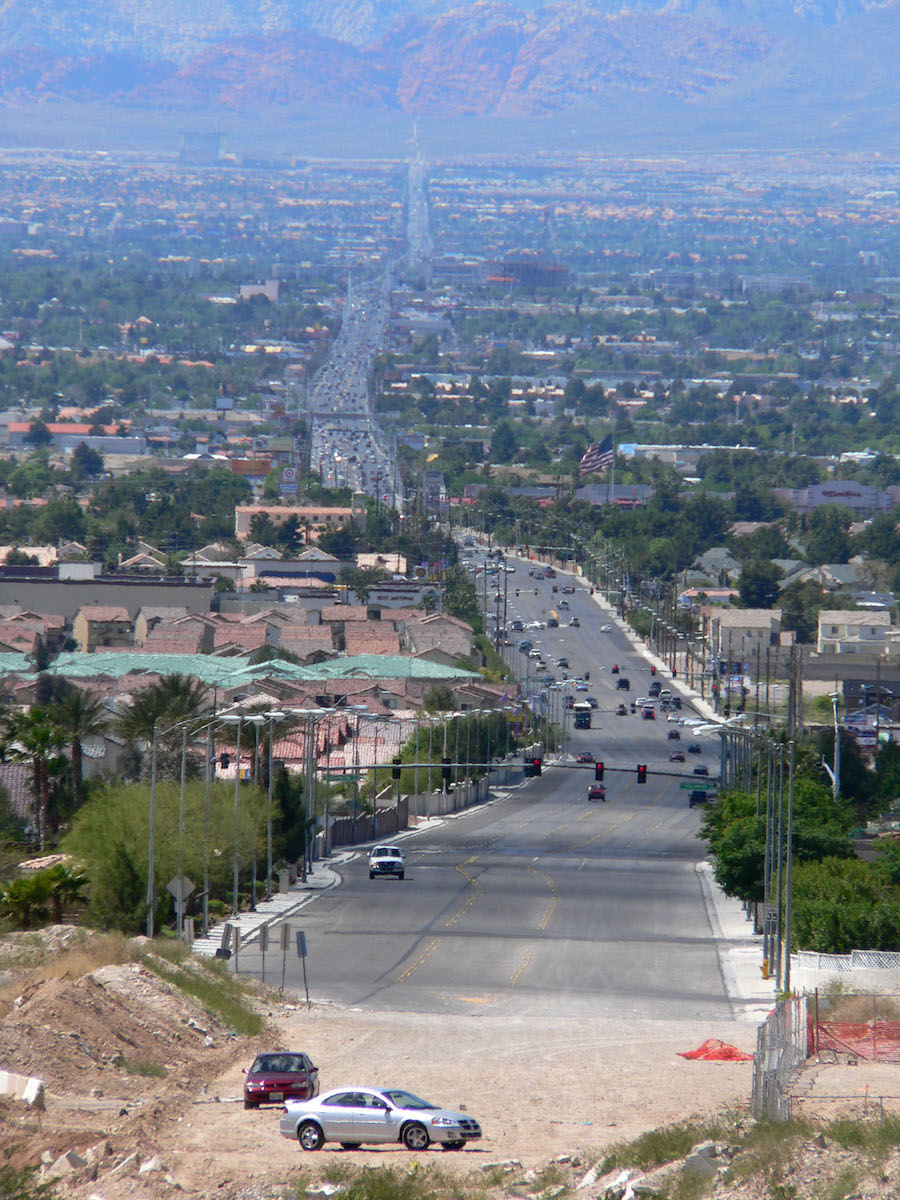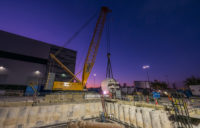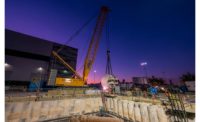A company’s proposal for a multi-billion-dollar, for-profit mass-transit system along a major Las Vegas commercial corridor has won preliminary city approval.
Axios Nevada received an exclusive negotiating agreement with the city at an April 7 council meeting to develop a master plan for a high-capacity system along Charleston Boulevard. The street extends 19 miles from the Vegas suburbs in the west, through the south end of downtown, and into the older neighborhoods to the east.
The company now has two years to provide a series of deliverables before receiving final city approval. In the first 12 months, Axios Nevada is expected to provide ridership and revenue forecasts and develop concept plans, including how to connect with the existing municipal bus system.
Transportation consultant Tom Skancke, an Axios Nevada principal, says the company is going to look at a variety of transportation technologies, including light rail.
“If we did light rail—fixed guideway light rail with steel wheel-on-rail technology—it’s about $2 billion, but there are so many emerging technologies around the world,” he says.
Skancke says the ongoing studies and investor interest would determine the eventual price tag. He says his group has spoken to potential investors from the private equity and development communities and those talks are ongoing.
He says the mass-transit line would complement the local bus system, but light rail or similar technology would be a better catalyst for the commercial development he envisions the project sparking along Charleston Boulevard.
Skancke, a past CEO of the Las Vegas Global Economic Alliance development agency, says he hit roadblocks in recruiting technology companies because of the lack of a mass-transit system.
“Las Vegas is the largest metro area in the West without a high-capacity transit system, and many younger workers don’t want the cost of owning a car,” Skancke says.
Charleston goes through some of the city’s oldest areas, and mass transit could speed the renewal that’s already happening there, says Natalie Wainwright, a commercial real estate broker who specializes in bringing tech companies to Southern Nevada.
“After decades of rapid outward growth, this proposal could reduce the stress on one of our community’s biggest arteries, better connect all parts of the city, and bring more development to the urban core,” says Wainwright, who serves as vice president for Logic Commercial Real Estate in Las Vegas.
Skancke says Axios Nevada made an unsolicited proposal to the city in March 2020. It was based on a 2016 city of Las Vegas mobility master plan that included a feasibility assessment of high-capacity transit along the Charleston corridor. He says it will likely take most of a year to complete the ridership and revenue study.
“This is one of the more complicated items for the first year that we need to get right,” Skancke says. “The effort is very labor intensive and requires sophisticated ridership forecasting and revenue-estimation modeling.”
He says announcements on engineering and architectural partners and others involved in the effort should come in the next few weeks.





Post a comment to this article
Report Abusive Comment